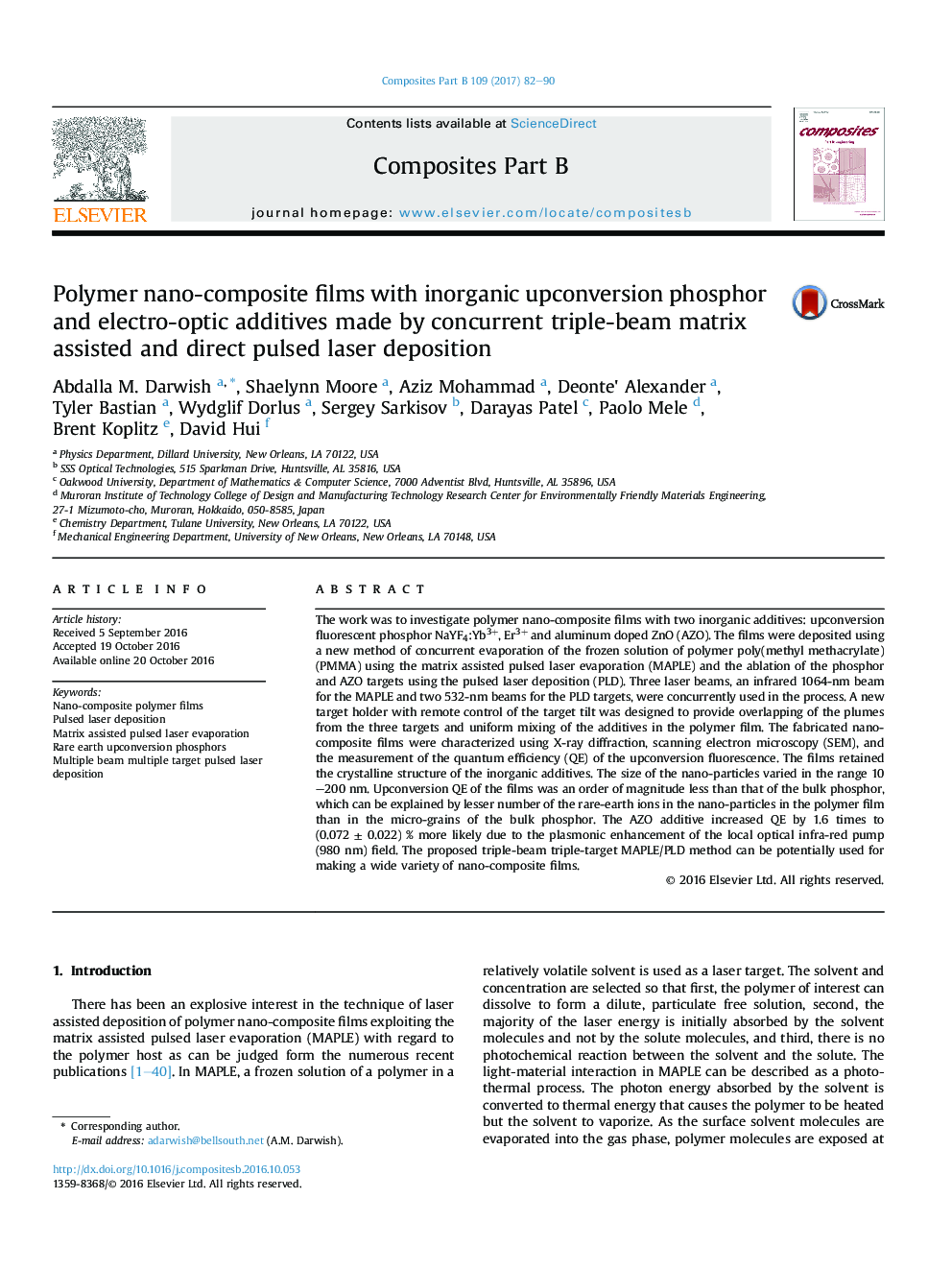| Article ID | Journal | Published Year | Pages | File Type |
|---|---|---|---|---|
| 5021805 | Composites Part B: Engineering | 2017 | 9 Pages |
Abstract
The work was to investigate polymer nano-composite films with two inorganic additives: upconversion fluorescent phosphor NaYF4:Yb3+, Er3+ and aluminum doped ZnO (AZO). The films were deposited using a new method of concurrent evaporation of the frozen solution of polymer poly(methyl methacrylate) (PMMA) using the matrix assisted pulsed laser evaporation (MAPLE) and the ablation of the phosphor and AZO targets using the pulsed laser deposition (PLD). Three laser beams, an infrared 1064-nm beam for the MAPLE and two 532-nm beams for the PLD targets, were concurrently used in the process. A new target holder with remote control of the target tilt was designed to provide overlapping of the plumes from the three targets and uniform mixing of the additives in the polymer film. The fabricated nano-composite films were characterized using X-ray diffraction, scanning electron microscopy (SEM), and the measurement of the quantum efficiency (QE) of the upconversion fluorescence. The films retained the crystalline structure of the inorganic additives. The size of the nano-particles varied in the range 10-200 nm. Upconversion QE of the films was an order of magnitude less than that of the bulk phosphor, which can be explained by lesser number of the rare-earth ions in the nano-particles in the polymer film than in the micro-grains of the bulk phosphor. The AZO additive increased QE by 1.6 times to (0.072 ± 0.022) % more likely due to the plasmonic enhancement of the local optical infra-red pump (980 nm) field. The proposed triple-beam triple-target MAPLE/PLD method can be potentially used for making a wide variety of nano-composite films.
Related Topics
Physical Sciences and Engineering
Engineering
Engineering (General)
Authors
Abdalla M. Darwish, Shaelynn Moore, Aziz Mohammad, Deonte' Alexander, Tyler Bastian, Wydglif Dorlus, Sergey Sarkisov, Darayas Patel, Paolo Mele, Brent Koplitz, David Hui,
